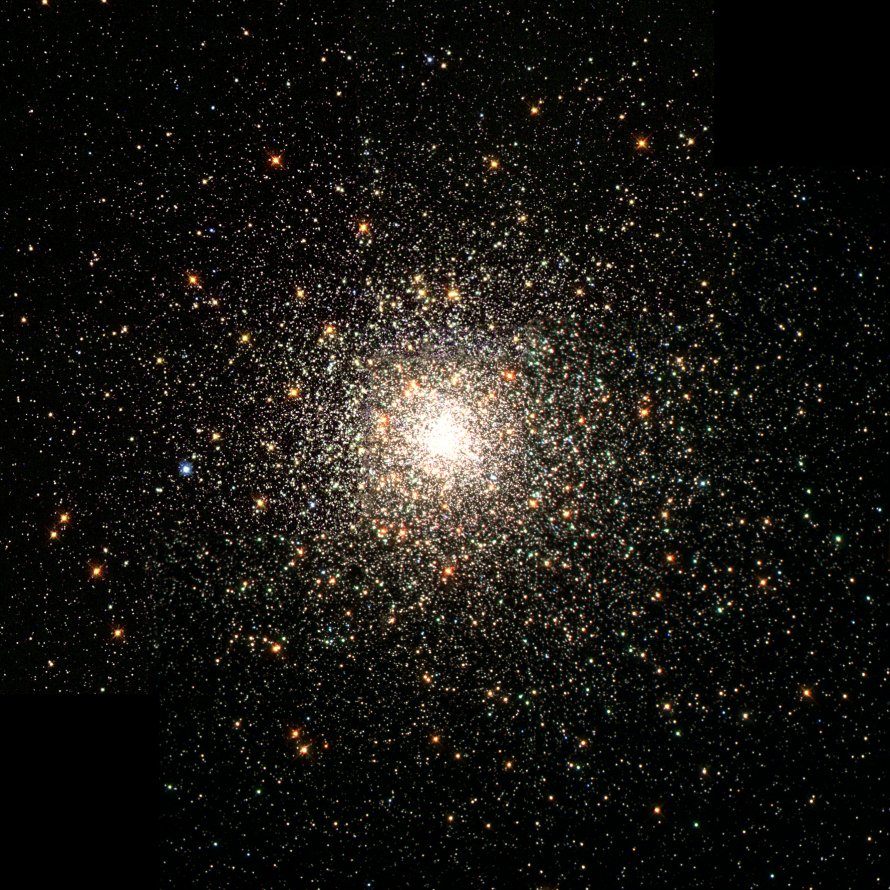M80 (NGC 6093)
Messier 80 (NGC 6093) is a globular cluster located in the constellation Scorpius, in the Galactic Center of the Milky Way Galaxy in the Local Group of galaxies. M80 is 32600 light years away from Earth.
M80 is best viewed during mid-summer, is magnitude 7.9, and can be viewed with binoculars. M80 is 10' in apparent size. For reference, the full moon is 30'.
Observing difficulty: Intermediate
- Name:
- Type:
- globular cluster
- Constellation:
- Scorpius
- NGC or IC:
- NGC 6093
- Magnitude:
- 7.9
- Viewing:
- binoculars
- Size:
- 10'
- Distance (light years):
- 32600 LY
- RA:
- 16h 17.0m
- Dec:
- -22 59'
- Season:
- mid-summer
- Milky Way location:
- Galactic Center
- Galaxy group:
- Local Group
- Messier Marathon #:
- 83
* The naked eye can see up to magnitude ~7-8 objects under ideal dark sky conditions.
Exploring the Dense Star Cluster
Messier 80 (M80 or NGC 6093) is a globular cluster located within the Scorpius constellation. The French astronomer Charles Messier first discovered this cluster in 1781, later adding it to his catalogue. Recognized for its high density of stars and intriguing history, M80 is a remarkable deep-sky object that entices both amateur stargazers and professional astronomers.
Characteristics of M80
As a globular cluster, Messier 80 is home to hundreds of thousands of stars held tightly together by gravity, creating a nearly spherical structure. This dense cluster is thought to contain a significant number of "blue stragglers." These are stars that appear to be younger, and hotter than their surrounding companions, causing them to glow with a distinctive blue light.
A fascinating event in the history of M80 is the discovery of a nova, dubbed T Scorpii. This stellar explosion was observed in 1860 and was one of the earliest novae to be recorded. T Scorpii temporarily became the brightest object within M80 and serves as a notable instance of stellar volatility within globular clusters.
Magnitude and Size
M80 has an apparent magnitude of 7.87, making it invisible to the naked eye but an attainable target for amateur astronomers with the assistance of telescopes or high-powered binoculars. It spans around 10 arcminutes in the sky, which equates to a spatial diameter of nearly 95 light-years, considering its estimated distance of approximately 32,600 light-years from Earth.
Finding and Viewing M80
To find M80, one needs to locate the Scorpius constellation, more specifically, the bright star Antares. M80 is situated approximately halfway along a line drawn between Antares and Acrab (Beta Scorpii). Given that this region of the sky is rich in deep-sky objects, particularly globular clusters, the area provides a delightful observing challenge for stargazers.
A small telescope or strong binoculars can reveal the presence of M80 as a hazy patch of light. With a medium-sized telescope under good viewing conditions, the cluster's dense core becomes more visible, appearing as a concentrated, almost star-like center enveloped by a fainter halo. However, due to its high concentration of stars and significant distance from Earth, resolving individual stars in M80 is a task reserved for larger telescopes.
M80's rich stellar population, combined with its historical and scientific significance, makes it a rewarding object to observe. Each glimpse into this dense sphere of ancient stars provides a tangible connection to the vastness and complexity of our universe, reminding us of the grand scale and timeless beauty of the cosmos.



